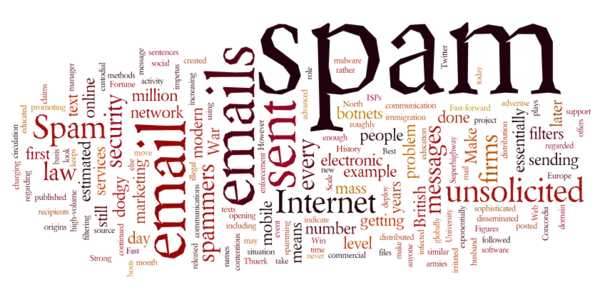
If you use email and own a mobile phone, you probably encounter spam on a daily basis. Before we assess the full scale of the problem today and explore what can be done about it, let’s take a look at the origins of the modern electronic spam phenomenon…
A Brief History of Spam
In 1864, an unsolicited telegram was distributed to multiple recipients, including a number of irritated British politicians, in order to advertise dental services. This is widely regarded as the first example of spam using a mass communications system. In the decades that followed, North Americans were bombarded with investment offers sent via an under-regulated telegraph network.
Fast-forward to 1978, and Gary Thuerk (a marketing manager at the Digital Equipment Corp) sent an unsolicited advertising message to 393 email addresses through ARPANET (the forerunner to the modern Internet). He now has the rather dubious honour of being the “father of spam.”
10 years later, the infamous electronic chain letter ‘Make Money Fast’ was released onto the Internet, providing a blueprint that spammers have continued to follow to this day. The individual who wrote and disseminated the original communication has never been identified.
1994 saw the world’s first large-scale commercial Internet spam event – the so-called ‘Green Card spam’ – where husband and wife Laurence Canter and Martha Siegel posted messages on Usenet (the network that hosts online ‘newsgroups’) promoting their immigration law services. They later published a contentious book entitled How to Make a Fortune on the Information Superhighway.
The Scale of the Problem Now
Figures from 2010 indicate that up to 89% of all emails are spam. That means roughly 260 billion spam emails are sent every day. 1 in every 284 emails contains malware, and 1 in every 445 is a phishing email.
88% of all spam is sent from botnets (essentially zombie armies of infected computers), and there are an estimated 5 million botnets sending out spam globally.
In October 2012, the amount of email spam in circulation actually dropped 4.5% to its lowest level this year (68% of all emails sent), but over 3% of all emails still contained malicious files.
Whilst there are some positive signs regarding the prevalence of email spam, the number of spam text messages sent to mobile phones is increasing exponentially; a recent UK study found that 148 million spam texts are sent each month in Britain.
And the spammers have a stranglehold on social media too, with an estimated 40% of all Facebook and Twitter accounts created for spamming purposes.
What Are The Best Weapons in the War on Spam?
Web users, ISPs, email providers and Internet security firms deploy a range of solutions in the fight against spam, but despite people getting more educated about online security issues and junk mail filters getting more sophisticated, the spam keeps coming. That means enough people are still opening dodgy emails and clicking dodgy links for the spammers to make a profit.
Researchers like those at Concordia University continue to develop new, more advanced methods of filtering, but there will always be sceptics who question whether security firms really want perfect spam filters, as this would essentially put an end a major source of their income.
So what else can be done to mitigate the problem?
One possibility is charging for high-volume email usage to deter mass distribution of unsolicited emails, but organisations that legitimately send out thousands of emails are unlikely to support such a move.
Strong law enforcement – with heavy fines and, where appropriate, custodial sentences, also plays an important role; two British company directors have just been fined £440,000 ($704,000) for sending huge numbers of unsolicited text messages used to generate leads for claims management firms, and this may well serve as a dissuasive example to anyone considering similar illegal marketing activity.
However, the situation is complicated by the fact that many spam originates in Eastern Europe or China, and weakening the organised crime networks that control the email lists, the software and the domain names is a project that requires a level of international impetus and cooperation that doesn’t currently exist.
Spam has been around for nearly 150 years; it’s not going to disappear any time soon, but education, technology and the law will all play a part in this continuing, epic battle.
This is a guest post by Rick Young – a PPI claims specialist with an interest in communications technology.










Comments